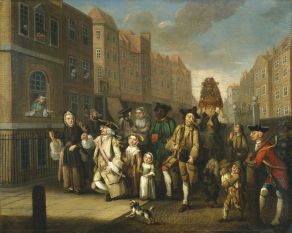The idea of this topic came about during a discussion about clothing workshops, and that several skilled and knowledgeable people in this hobby refuse to publish patterns based on their research because of the overwhelming criticism that other researchers and experts have received.
There are many people who spend an exuberant amount of time creating patterns only to be met with a dismissive review of "this pattern is terrible. It doesn't fit, and the instructions are awful," by some neophyte who doesn't actually know what they are dealing with. Let me be the first one to say it ladies and gentleman: with most documented historic patterns, if it doesn't fit, it's not the pattern--it's you.
Seriously, it is literally you. In case you were never told so in school, every human on this planet is different. That is an unfortunate detail that many people in historic sewing ignore and the cause of frustration for those who publish historic patterns.
Most historic patterns are made by copying an the individual pieces of an original garment of known dimensions; the exact same thing that is done with historic clothing books. After that, some of the patterns are scaled to create options in line with modern common sizes, and occasionally dimensions are altered to be more in line with modern sizing conventions. Some available patterns are simply blown up versions of extant garments from those scholarly clothing books.
Ok Sean, you just said a bunch of nerdy stuff, but what does that mean? What it means is that unless you have the exact same body dimensions as the person who own the original garment, you're going to have to alter the pattern to fit you properly.
These patterns are a map to creating an replica of an extant garment. If you want to use the pattern, you are more than likely going to have to do significant alterations to the pattern to make it fit you properly. Thus the importance of making a muslin.
First of all, Garsualt talks about making muslins, so you should too. I make muslins for any new garment that I make to ensure fit and to get accustomed to the peculiarities of the original garment. Personally, I find that I have broader shoulders, longer arms, and a longer torso than most 18th century men, and I anticipate those alterations.
Anyway, I think that I've rambled enough. Be nice to your historic pattern makers, they know what they're doing. Instead of whining, learn how to alter and fit.
There are many people who spend an exuberant amount of time creating patterns only to be met with a dismissive review of "this pattern is terrible. It doesn't fit, and the instructions are awful," by some neophyte who doesn't actually know what they are dealing with. Let me be the first one to say it ladies and gentleman: with most documented historic patterns, if it doesn't fit, it's not the pattern--it's you.
Seriously, it is literally you. In case you were never told so in school, every human on this planet is different. That is an unfortunate detail that many people in historic sewing ignore and the cause of frustration for those who publish historic patterns.
Most historic patterns are made by copying an the individual pieces of an original garment of known dimensions; the exact same thing that is done with historic clothing books. After that, some of the patterns are scaled to create options in line with modern common sizes, and occasionally dimensions are altered to be more in line with modern sizing conventions. Some available patterns are simply blown up versions of extant garments from those scholarly clothing books.
Ok Sean, you just said a bunch of nerdy stuff, but what does that mean? What it means is that unless you have the exact same body dimensions as the person who own the original garment, you're going to have to alter the pattern to fit you properly.
These patterns are a map to creating an replica of an extant garment. If you want to use the pattern, you are more than likely going to have to do significant alterations to the pattern to make it fit you properly. Thus the importance of making a muslin.
First of all, Garsualt talks about making muslins, so you should too. I make muslins for any new garment that I make to ensure fit and to get accustomed to the peculiarities of the original garment. Personally, I find that I have broader shoulders, longer arms, and a longer torso than most 18th century men, and I anticipate those alterations.
Anyway, I think that I've rambled enough. Be nice to your historic pattern makers, they know what they're doing. Instead of whining, learn how to alter and fit.













